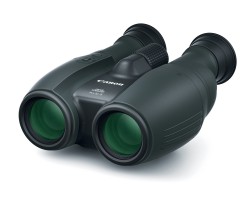Canon 8x20 IS & 10x20 IS Binoculars – Should You Buy?
Canon recently added two new compact models to their ever-growing and an ever-improving (for the most part) lineup of image stabilization binoculars.
Incorporating very small 20mm lenses, these two new models come with either a moderate 8x or a more powerful 10x magnification.
With much of the technology trickling down from their cameras, there is no denying that Canon IS binoculars are amongst the best in this niche and certainly the most popular image-stabilized binoculars currently on the market.
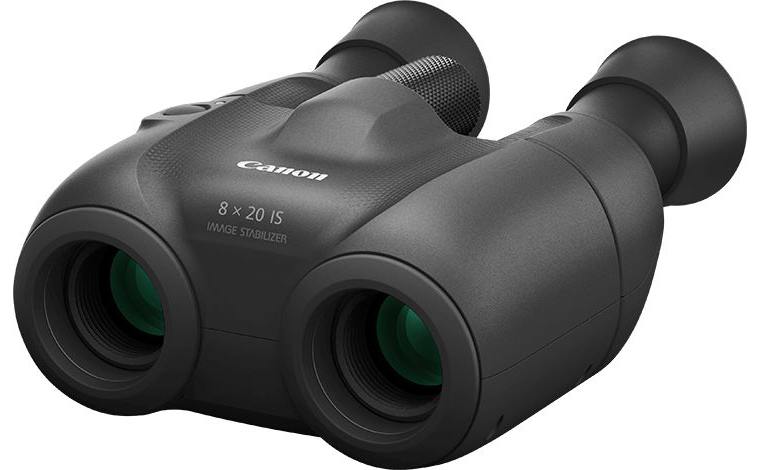
However, no matter how good Canon’s Optical Image Stabilizer is, these are very specialized instruments that do have their particular drawbacks which means that whilst a good choice for some, they will not be right for everyone.
Also when it comes to these two new 20mm models, I wonder, does combining IS with such small lenses and relatively low magnifications make sense?
So in this article I review the main advantages and disadvantages of Canon’s Image Stabilization binoculars in general and then see how these particular traits transfer to and indeed how they affect these two new compact models.
In this way, we can then ascertain what uses and therefore which type of users they are ideal for.
Thus by the end you should know if they are right for your particular requirements and if you should go out and buy a pair, choose one of the larger Canon IS binoculars or perhaps are you better off with a standard pair of compacts or even mid-sized binoculars instead?
Advantages of Image Stabilization (IS) Binoculars
Reduced Image Shake
The unique selling point and the main advantage these Canon binoculars have over just about any standard instrument is that they reduce image shake and thus potentially produce an image that is easier to view which in turn means you can potentially view more detail in the image.

Less Eye Fatigue
For observing objects over long durations, a shake-free or even a less shaky view really helps reduce eye fatigue.
Higher Magnifications
A more steady image also means that you can opt for a higher-powered binocular without the need to use a tripod.
Downsides to IS Binoculars
Heavy & Bulky
In order to accommodate the electronics, battery and the lens-shift system results in a heavier, bulkier binocular in comparison to an equivalent optics only alternative.
Expensive
All this technology and electronics comes at a price and thus Canon IS binoculars are relatively expensive when you compare them to standard binoculars with the same level of optics.
Less Hardwearing
Whilst they are certainly not overly flimsy, the added complexity and the inclusion of electronics makes Canon IS binoculars less robust and hardy than a well made standard binocular.
Water Proofing
There is only one model within the Canon IS range that is fully waterproof (Canon 10x42L IS WP ) and a couple of others that are for “all-weather” conditions (Canon 18x50 IS AW & Canon 15x50 IS AW).
However, these 20mm versions and indeed all the other mid-sized options from Canon are neither waterproof or weatherproof and thus are not really suitable for use in inclement weather conditions.
Longevity?
Just like a Canon camera or camcorder and indeed just about any electronic device from any manufacturer, be that your smartphone, laptop or PlayStation, the technology for electronics continues to move forward at a very fast pace and thus how long until the device becomes obsolete and outdated?
In comparison, you can buy a high quality optical only binocular now and in 10 years time (perhaps even more) it will almost certainly still be able to compete against the newer models.
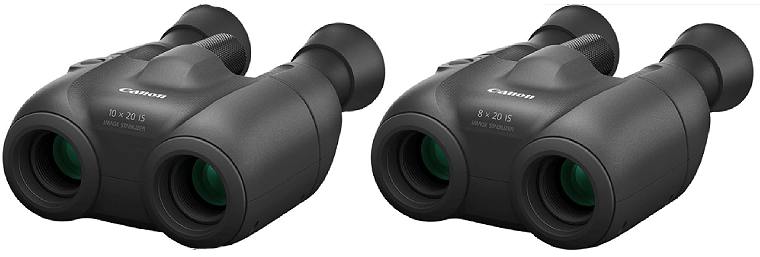
Canon 8x20 IS & 10x20 IS Binoculars
The pros and cons I raised above are for Canon IS binoculars in general and not specific to these new 20mm compact versions. So now let us take a look at these two models in particular and see how they are affected by some of them:
Note: I have tried reaching out to Canon to get them to send me a pair to test, but as of yet, I have not even had the courtesy of a reply back from them! Therefore, the thoughts below are based on a combination of the advertised specifications that Canon provides, basic optics theory and my experience of using other Canon IS binoculars and binoculars in general:
Size & Weight
The whole idea of a compact binocular is for them to be as small and lightweight as possible.
In their own words, the Canon 8x20 IS binoculars are “the world’s lightest binoculars with Image Stabilization (IS)”, which may be true, but how do they compare to a standard compact binocular in both their weight and dimensions?
As you can see from the table above, both the 8x20 and the Canon 10x20 IS binoculars are considerably bulkier than your average non-stabilized compact binocular. The quoted weights also don’t include batteries although as they only use one CR123A lithium battery for power the addition to the total will be very minimal.
Tiny 20mm Objective Lenses
What is very important to note here is that all of the compact binoculars listed in the table above also have larger objective lenses than the tiny 20mm ones used on these Canons and yet they still manage to remain more lightweight and more compact.
Indeed as you can see whilst they do beat the average full-sized 42mm binocular, there are many mid-sized instruments that have appreciably larger 32mm lenses that come in under the 20mm Canon IS in both weight and dimensions.
Why Lens Size Important
Just like the windows in your house, larger lenses are able to capture and let in more light. On a binocular, this is very important as more light makes for a better quality image and an improved low light performance.
So with any compact binocular, you are sacrificing some image quality and low light performance in order to have an instrument that is smaller and more lightweight than an equivalent quality mid-sized (approx 32mm) or full-sized binocular (approx 42mm).
With the Canon IS 8x20 and 10x20 binoculars, you are sacrificing even more optical and low light performance than a typical compact, yet they are still about the size and weight of many mid-sized instruments.
Here I also just wanted to point out that the 10x20mm configuration on the Canon IS 10x20 binoculars produce a tiny 2mm exit pupil and thus I would suggest that they are only reserved for use in good light conditions.
For more on this please take a look at my complete guide to the exit pupil.
Price
At the time of writing, they are listed at $499.99 for the 8x20 IS and $549.99 for the 10x20 IS.
However, as they have just been released, these prices will be at their highest levels and over time, it will come down. This is especially true when you consider the older Canon 8x25 IS now retails for around $345.00, which is about the level I expect them to settle on.
You can view Current Prices Here.
I feel this price is perfectly reasonable when you consider the technology involved, the level of the electronics used and indeed the very high level of optics that Canon use on them.
But…having said that, this is still a decent chunk of change for a compact and you need to be sure that you actually need image stabilisation because for this sort of money you could get yourself a REALLY very good pair of standard compact binoculars.
Is IS Necessary with 8x and 10x Magnification?
The amount of image shake you see is directly proportional to the amount the image is magnified as the higher the power, the more any tiny movement you make is magnified.
So whilst it is always nice to have a completely or even just a slightly more steady image, most users (when using and holding the binocular correctly) are able to keep an 8x or even 10x binocular still enough to obtain a relatively and what I would describe as an acceptably steady view.
This is why the Canon IS series contains mostly higher-powered 12x, 14x, 15x and 18x models as this is where the image stabilization is really needed most and is where its positive influence begins to outweigh the negative aspects, especially when it comes to the increased size and weight.
However, having said that, it is always nicer to have a steadier view and if you can get an even more shake-free image at 10x or even 8x, then why not?
Well, that will largely depend on your preferences and needs:
So Should You Buy a Canon 8x20 or 10x20 IS Binocular?
Yes, but only if all these conditions are true:
- If you have particularly unsteady or shaky hands or if you absolutely must have as steady an image as possible and can’t or don’t want to use a tripod.
- If you are not planning to use your binoculars in poor light conditions or in wet weather.
- Need your image stabilized binocular to be as small and lightweight as possible and are not concerned with low light ability.
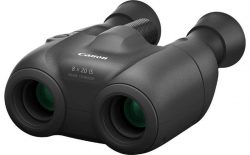
Here I would suggest them as a good idea to some more elderly users and perhaps even older children as many can have less stable hands. However, the problem is with the small exit pupil these particular models create (especially in the case of the 10x20 IS) as this does make them harder to use and thus they are less suitable for the novice user.
This is because you have to be more precise when lining your eyes up with the extra small beam of light exiting the binocular otherwise you will get dark rings forming on the edges of the view. For more on this: the complete guide to the exit pupil.
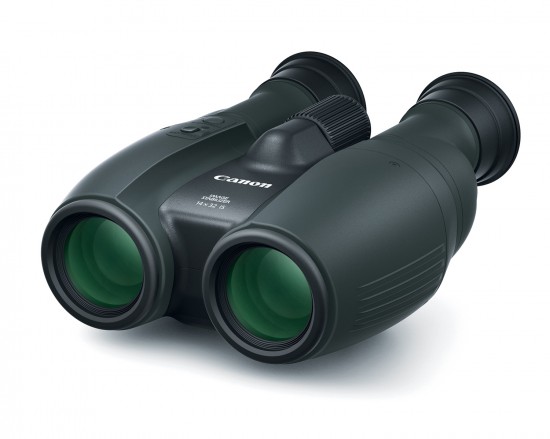
No, rather get a larger Canon IS Binocular if you:
- Must have image stabilization
- Value higher image quality, brightness and better low light performance over having the smallest and lightest binocular currently on the market.
- Want a higher magnification than 8x or 10x
- Want a Canon IS binocular that is weatherproof
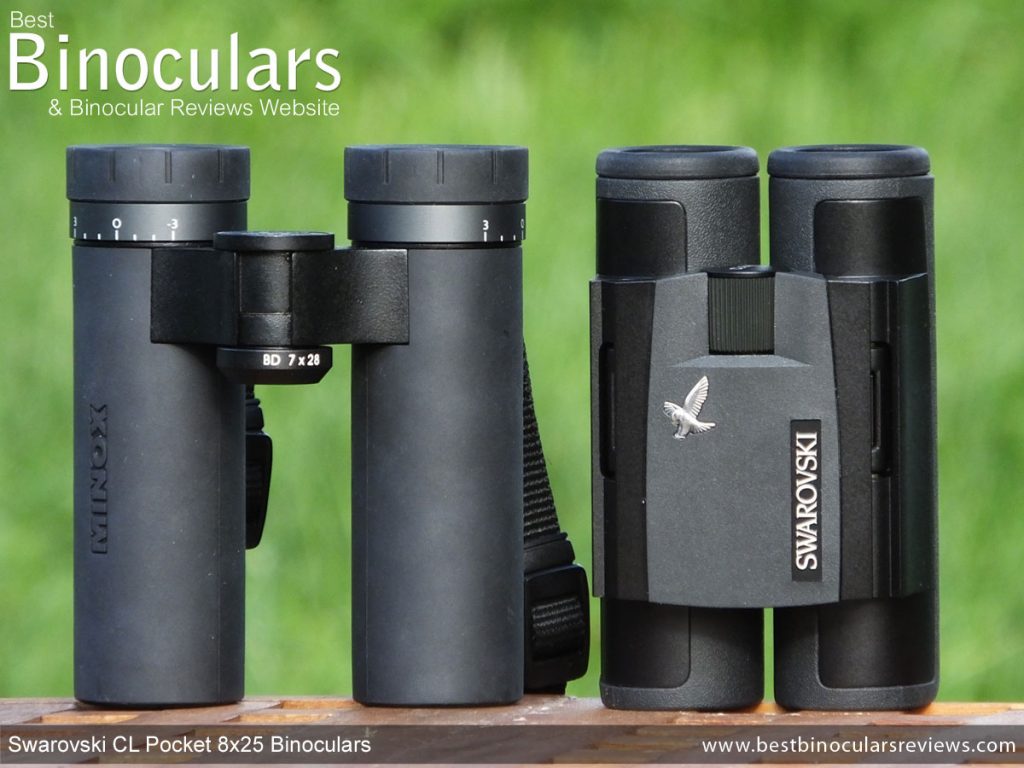
No, rather buy a standard pair of compact binoculars if:
- You want your compact binocular to deliver a better low light performance than what an 8x20 or 10x20 can produce
- You want a compact binocular that is actually compact!
- A super steady view is not an absolute priority or if you would rather just use a tripod to achieve it when needed.
- You need your binocular to be more robust, hardwearing and waterproof than the 20mm Canon IS binoculars.

 Article | Posted by Best Binocular Reviews
Article | Posted by Best Binocular Reviews 
 Categories:
Categories:  Tags:
Tags: 
